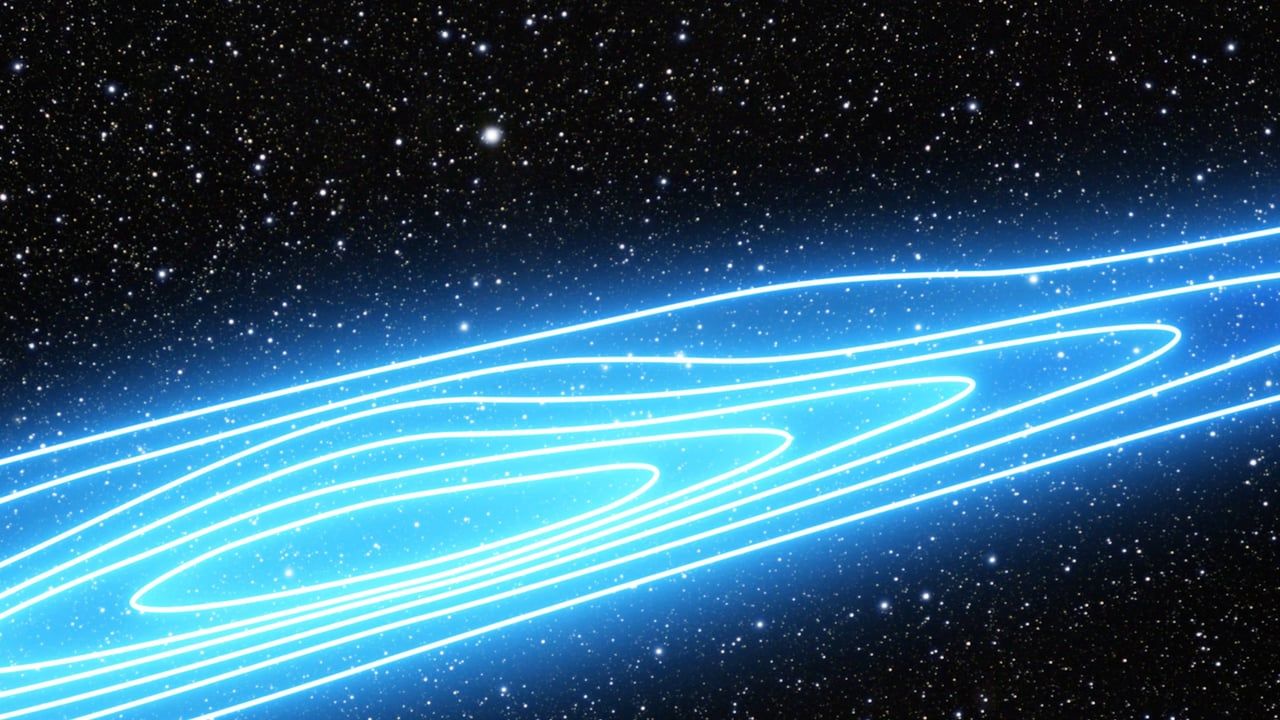A new era for astrophysics
In 2016, Einstein’s prediction of gravitational waves, ripples propagating through the very fabric of our Universe, was confirmed by a team of scientists at the Laser Interferometer Gravitational-Wave Observatory (LIGO), who have since been awarded the 2017 Nobel Prize.
Their initial findings were based on the collision of two black holes, massive objects coming together so violently that gravitational waves were produced. However, these waves were so faint that they were previously undetectable. Three further, similar events have since been detected – the most recent discovery observed the same waves, but this time from the collision of neutron stars rather than black holes. Formed in the collapse of a large star, neutron stars are incredibly dense, containing several solar masses within a radius of about ten kilometres.
On 17 August 2017, the fifth detection took place. The two LIGO centres and a similar Virgo centre set up in Europe detected gravitational waves like they’d never seen them before. Instead of lasting a matter of seconds, this new signal lasted almost two minutes. Using the global positions of the three centres, they even managed triangulate the position of the source to a small patch of sky in the Southern Hemisphere.
Instead of lasting a matter of seconds, this new signal lasted almost two minutes…
Paired with this was NASA’s Fermi satellite, which detected a short gamma ray burst (sGRB) 1.7 seconds later. Bursts such as this on their own are not a rare occurrence, but scientists are still speculating over their origins. Localising the direction of these bursts was far less specific than the gravitational waves, however the broader direction agreed with the area highlighted by LIGO and Virgo.
The proximity of the two detections is what makes this discovery quite so exciting. It marks the first time that an astrological event has been detected in two mediums- as a gravitational and electromagnetic (EM) wave. It also provides conclusive evidence that neutron star collisions are the source of the sGRBs, something that’s puzzled astronomers since their discovery in the 1960s. Additionally, by using the 1.7s delay, the team at LIGO could then constrain the speed of gravitational waves to ±10-16 times the speed of light from EM waves. Previous theories and models put this difference far higher, but this discovery gives concrete evidence that they travel at very similar speeds.
The proximity of the two detections is what makes this discovery quite so exciting…
The next stage was to contact the 90 astronomical observatories across the globe to locate the specific location of the event, and attempt to measure the EM radiation coming from it more precisely. By observing this, atomic spectra could be taken to confirm the presence of heavy elements amongst the aftermath of the collision, leading to the verification of several theories surrounding their formation. Among the spectra taken, metals such as gold and platinum were identified, as well as many others atomically heavier than iron, the heaviest element a star can synthesize.
We spoke to Dr Danny Steeghs from the Warwick Astronomy & Astrophysics group, who heads up the Gravitational-wave Optical Transient Observer (GOTO) project- the latest addition to Warwick’s observing facilities in La Palma. Steeghs said: “Triangulations with LIGO and Virgo will vary in quality, the binary neutron star event is actually about as good as it gets, but many (future) events will have significantly poorer constraints. GOTO was designed to be able to chase a large number of signals, even if the localisation isn’t very accurate, as it has a large field of view.” GOTO was unable to be utilized this time as it was observing a position in the South Pole, however Dr. Steeghs was still heavily involved in the discoveries, with Dr. Andrew Levan and seven other Warwick names making it onto papers related to the event.
This could mark the start of a whole new era for astrophysics, with plenty more discoveries just beyond the horizon…
These findings are only the beginning of what can be learned from this event. With GOTO and projects like it searching the skies both in anticipation of an event, and after a gravitational wave detection, this could mark the start of a whole new era for astrophysics, with plenty more discoveries just beyond the horizon.

Comments